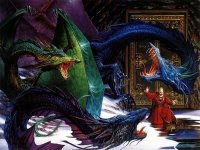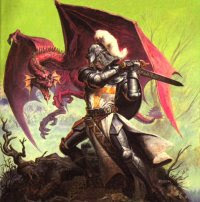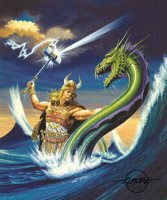It Happens Sometimes
The Fairest of Fairies hovers;
she lands upon a thistle-leaf.
A beam of light shines, as it seems,
from her entire being, blue, purple, and green,
lighting all about her perch
with the brilliance of sun, in rainbow hues.
From the forest they came,
beaming the colors alike;
Fairy light was everywhere,
lighting the clearing around the thistle.
Stars twinkled above the magical sparks
of fairy lights in the tall grass.
The forest floor twinkling rhythmically,
with the stars above all glistened as one;
Like drummers at their drums, the stars pulsed on.
The crickets came with their instruments
to join in the chorus of creatures playing in-time
their hymns of joy and songs of love;
glad were they to serenade the harvest moon,
clothed in a gown of ocher flame in the east,
where she faithfully rose and held monthly court,
her river of light awash on the dark.
In the brilliance there was upon the night,
The insects, the little people, and all the fairy folk,
gathered around to make the wheel
that guides all who will follow in their fairy dance.
Dance, dance, little one! Dance like the dervish!
The brighter the moon and stars grow,
the brighter the queen of fairies shone,
as she stood on a wide blade of grass,
swaying slightly in the gentle night breeze.
It is early Fall when latest of the flowers
show their best, and sing in harmony,
with the melody of the fairy folk as they dance,
whirling in circles wherever they can
under heaven's vault;
even dancing upon the waters
of the babbling brook near by.
A girl with a bow quietly appeared.
Mesmerized by the activity before her,
she placed her bow on the ground.
She walked lightly, not wanting to frighten
the assembled company sharing the dance.
The Fairest of Fairies, hovering above,
saw the girl move stealthily ahead.
“A human so close!” She gave the alarm!
And in a snap of the fingers
all was as dark and void as it was before
the Fairest of Fairies had first appeared.
“Run, aye, in that way,” the girl thought.
And there, in the sky, she saw them again,
dancing and singing among the stars,
until the rooster crowed at the break of day.
“And may I be luckier next time we meet,”
the girl thought, as she bent to pick up her bow.
“I'd Love To Be A Fairy.”
“Maybe some day I will make the connection,”
she thought while on her way back to her life.
Sneaking back into bed before her people missed her.
Composed by Cynthia
✿ڰۣ❤In Loving Light from the Fairy Lady✿ڰۣ❤

















































